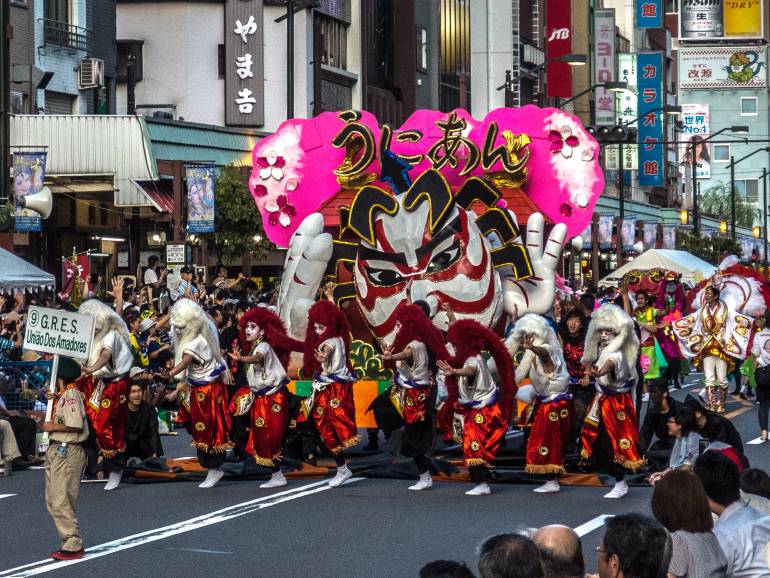The Asakusa Samba Carnival is a big, blown-out affair, with a lively parade.
What happens?
At Asakusa’s Samba Carnival, you are guaranteed to see the most dazzling array of beautiful telephoto lenses that you have ever witnessed — and the dancers are quite nice too!
Reflecting Japan’s close ties with Brazil (Brazil has the largest Japanese diaspora in the world), the festival sees teams compete with samba floats, drummers, and, of course, dancers with tiny costumes and enormous feathered headdresses.
Schedule
The carnival usually kicks off at 12 p.m. from Umamichi-Dori Street (near the Nitenmon Gate) and finishes on Kaminarimon Street at around 5 p.m. If you don’t want to be stuck in the crowds, either turn up early or go to Tawaramachi Station on the Ginza Line which is an easy walk from the finishing point of the parade.
Photo credit: Grigoris Miliaresis
Organizers may cancel events, alter schedules, or change admission requirements without notice. Always check official sites before heading to an event.Add to Calendar
- 227 m from Asakusa Station Ginza Line (G19)Asakusa Line (A18)Tobu Skytree Line (TS1)
- 0.6 km from Tawaramachi Station Ginza Line (G18)
- 0.8 km from Honjo-azumabashi Station Asakusa Line (A19)





















